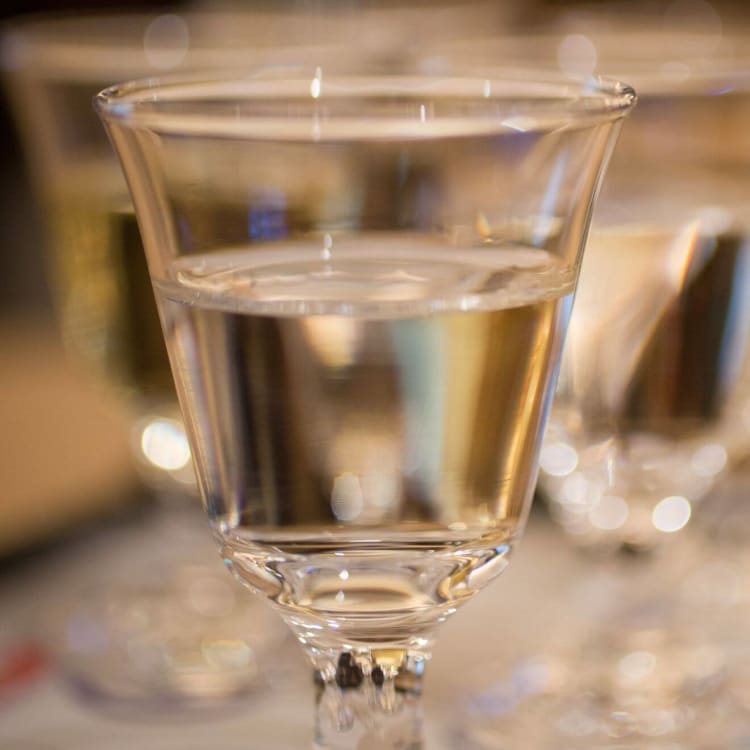
Seeking Sake Sake tasting flights are a great way to discover your favorite. Lori Ono©March 2020
When you visit Japan, learn about sake, Japan’s much-loved alcoholic beverage rooted deep in the country’s culture. Rice, now part of an everyday menu, was a luxury item in ancient Japan. Sake was considered even more luxurious since it required so much rice. Sake’s use in Shinto ceremonies and people’s personal celebrations continues today. Touring a sakagura (sake brewery) or sharing sake with friends at festivals, events or izakayas (Japanese pubs) gives you a chance to share in this tradition.
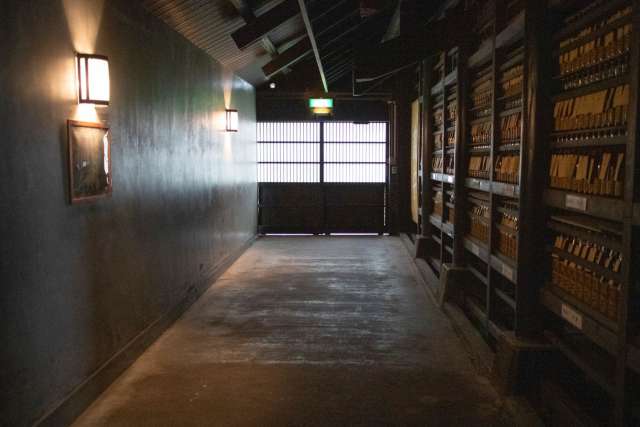
Bottles of maturing sake at Sawanoi Sake Brewery.
Making Sake
One needs four ingredients to make sake: rice, water, koji and kobo. Sometimes distilled alcohol is added. Brewers polish rice specifically bred for sake production to remove the bran before fermentation. Removing the outer layer of the grain removes fats and proteins that the yeast doesn’t like. Heavy polishing makes a purer sake, but is resource intensive, making it more expensive. Another consequence of removing the fats and proteins is that they are necessary for umami—critical for food pairing. After polishing, rice is steamed, and then yeast called kobo and water are added, and fermentation begins.
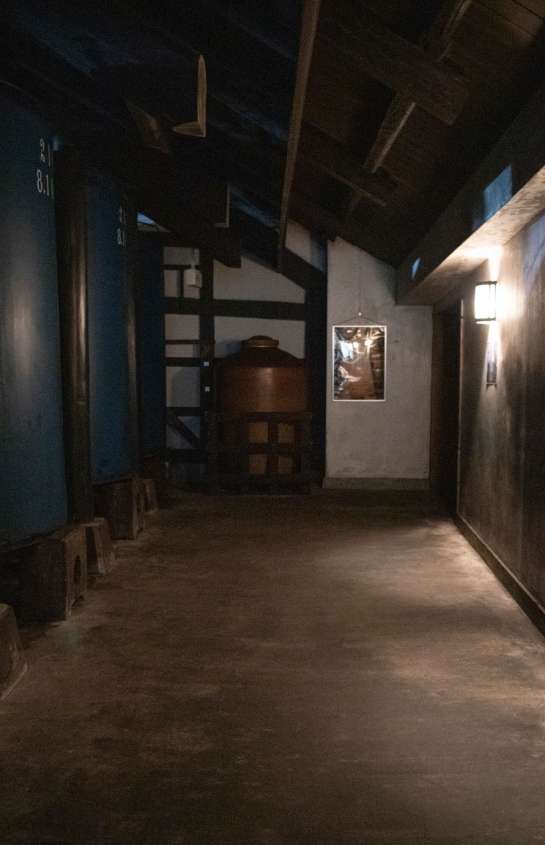
Sake storage vats at Sawanoi. Though the brewery uses newer tanks, they keep these to show changes in the brewery.
What makes good sake?
Unlike wine which depends heavily on the quality of grape, Mr. Imada of the Japan Sake and Shochu Association (JSS) says, “Brewing technique has more impact on the sake than the type of rice.” But he added that the type and quality of water is “maybe the most important element of sake brewing.” And sake is an ever-evolving craft. Today’s diet includes more meat, cheese and coffee, stronger flavors that pair better with a sake of higher acidity than the preferred sake of previous generations. Younger brewers tend to create sake with higher acidity making it feel crisp and juicy.
The role of umami
The term umami pops up when talk turns to sake. But what is it? Everyone is familiar with the four basic tastes: sweet, sour, salty and bitter. Umami is a taste of meatiness or of buttery feeling in the mouth. Meat, tomatoes, mushrooms and parmesan have lots of umami. Many Japanese foods are famous for their umami: shiitake, bonito flakes, konbu dashi (a stock made from seaweed). In 1908, chemist Kikunae Ikeda proposed umami as a separate taste. In 1985 umami was recognized as a scientific term and we now know that umami has its own taste receptors and isn’t of a combination of other flavors. Umami also enhances the taste of other food, which is helpful for food pairing.
Understanding sake classification
Sake is most commonly classified by the degree of rice polishing. Daiginjo means 50% or less of the rice grain remains. This is the most highly polished rice and the most expensive because of how much rice needed to produce it. It makes a fragrant sake. With ginjo, 60% or less of the rice grain remains. If 70% or less remains, it’s called honjozo.
Junmai is pure rice wine with no distilled alcohol added. This creates a drink which has more body. Brewers may add alcohol to create a smoother mouth feel. If you add alcohol, you can not use the word junmai.
Junmai Daiginjo and Daiginjo have the same level of rice milling, but the first is pure rice wine and the second has distilled alcohol added. One is not necessarily better than the other. It depends on the effect you prefer.
Mr. Benoit Champagne of sake brewery Urakasumi (Saura) (http://www.urakasumi.com) in Miyagi prefecture, says that classification is not the whole story. A good brewery can make less refined, less polished sake taste more luxurious. “If you start with the texture, you can understand the role of rice in sake,” he explains. But taste is subjective and sake experts agree that drinking what appeals to you is most important. But if you’re new to sake, where do you start?
The five tastes of sake
● Light and dry
● Savory, aromatic
● Sweet
● Rich
● Matured (as the sake ages, it becomes golden)
Other interesting types of sake
Haruzake: a newly pressed sake that comes of age in spring
Nigorizake: a cloudy, unfiltered sake
Namazake: an unpasteurized sake that tends to be light and fresh
Not sure where to start with your sake exploration? Mr. Imada suggests fragrant and sweet is the easiest for sake beginners. People more familiar with sake, or lovers of spirits may prefer light and dry, or rich types.
Basic pairing rules
● Light sake to light meals (fish, veg, tofu)
● Heavy sake to heavy meals (sukiyaki, meat dishes, rich cheese)
Get a feel for what you like or don’t like, then pair to your own taste. Sake sommelier, Ms. Makiko Tejima, advises pairing sake with foods rich in umami. You don’t need to limit pairing choices to Japanese food. Any food rich in umami, like Italian cuisine, will work.
Hot or cold?
Sake can be served hot or cold. There is no rule for sake’s drinking temperature. Heating expands one note of the taste and that can be a conscious choice of the brewer. Generally, heavier sake does better with warming than lighter. If in doubt, ask the server how a particular sake is best served.
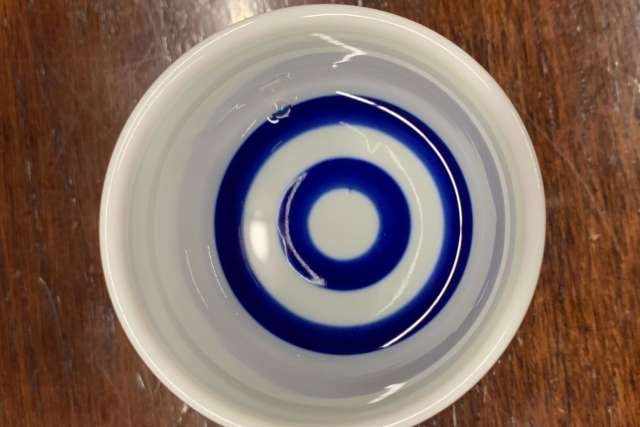
The blue circles in a sake tasting cup have a purpose. They help the taster identify the clarity of the drink.
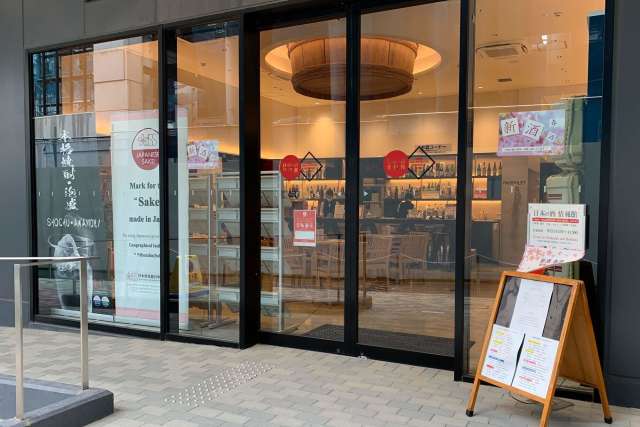
The main entrance to the Japan Sake and Shochu Association is at the back of the building.
Where to try sake
The tasting room at the Japan Sake and Shochu Association (JSS) can be your one-stop shop or the starting point for your sake exploration across Japan. It’s an affordable place to try sake since their purpose is to promote it. The tasting room usually serves 100 people daily and 80% of the clientele is Japanese. Since the JSS tasting room showcases many brewers, the sake menu changes often. Not sure what to choose with the large selection? English speaking staff and the English menu can help. Drop-ins are welcome but call ahead if your group is five or more. Most people take 30 minutes to an hour, depending on how much sake they taste. There are no otsumami (small snacks) available.
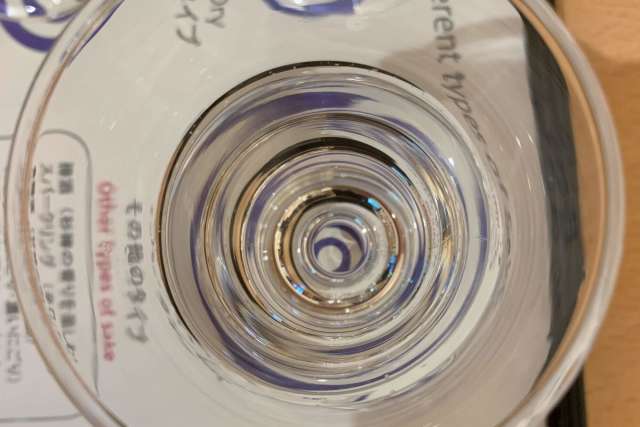
Each glass is placed on a paper identifying the flavor. A separate slip of paper lets you know the brand and maker of the sake you are drinking.
Try one of the tasting flights which range from JPY 300-400. The Sake 101 flight has five 30 mL glasses sampling the five flavors of sake. The JSS has pamphlets about sake and tours of sakagura (sake breweries) or you can explore their website. http://www.japansake.or.jp/sake/english/goto/jssic.html
Izakaya and bars are great places to try a variety of sake. You might not learn the intricate details about what you are drinking, but you will definitely experience the drinking culture of Japan. It is polite to pour drinks for other people in your group when their cup is low or empty. They will return the favor and fill your cup for you. When drinking with others, Japanese usually split the bar tab evenly.
Sake Festivals and Events
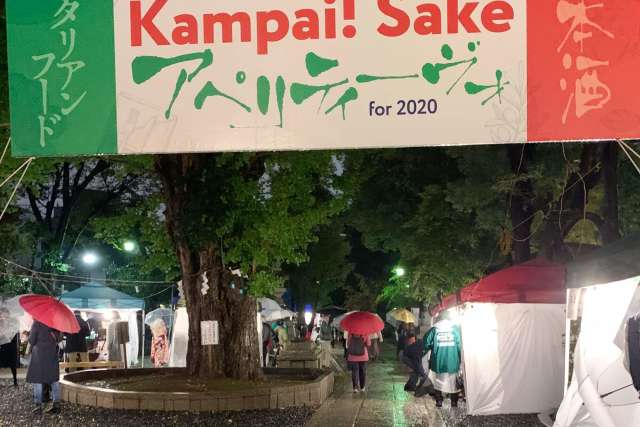
A little rain is no problem when there is sake!
If you see a sake event or festival, don’t hesitate to join in. Festivals and events are great ways to meet sake fans and make new friends. Tickets may need to be pre-purchased or but often you can buy drink tickets on site. Events like these bring together different brewers, giving you a chance to try different types of sake. Others work on promoting sake in new ways. The Kanpai Festival 2019, held at Sendagaya’s Hatonomori Hachiman Shrine, presented a unique collaboration between sake brewers and Italian restaurants, with musical performances.
Vending Machine Sake
Japan is famous for unusual vending machines and you can find sake vending machines. Just outside the west exit of Ryogoku station, you’ll find Edo Noren a building with a collection of shops styled with Edo (old Tokyo) design and nods to the area’s sumo culture. You can find sake vending machines inside a store name Tokyo Shoten (東京商店).
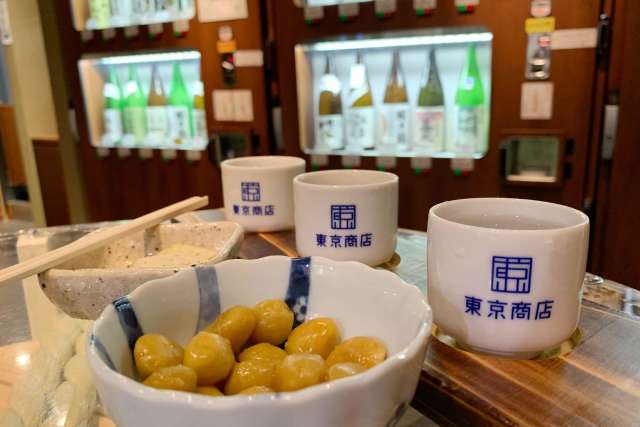
Ginkgo nuts preserved with miso or a rich cheese pair perfectly with sake.
Tokyo Shoten offers sake from the nine local sakagura (sake brewery). Prices range from JPY 200-400. Otsumami (small snacks) with miso or smokey flavours chosen to pair well with sake enhance the experience, well worth their small charge. Staff are available if you have questions. Don’t forget to return dishes to the back counter since Tokyo Shoten is self-service.
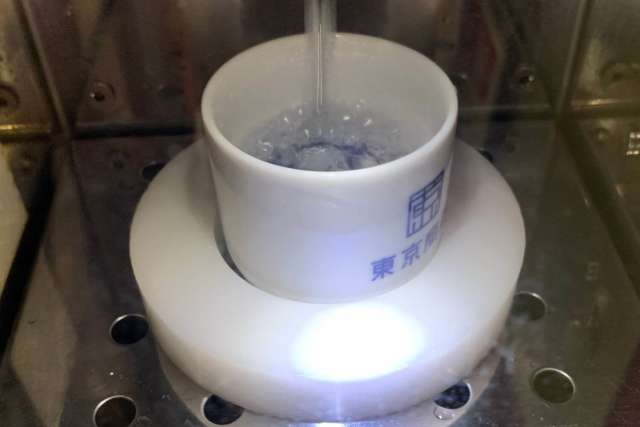
Try many different versions. Pop in a coin and try some sake.
If vending machine sake appeals to you, take a trip to Niigata City on the Joetsu Shinkansen. Niigata prefecture is famous for rice, sake and seafood. There are many breweries to explore. Next to Niigata Station is The Echigo Sake Museum Ponshukan. This sake vending machine extravaganza specializes in Niigata sake and souvenirs.
Sake Brewery Tours

The large brown ball hanging in the eaves is a sugidama (cedar ball). When a new batch of sake is started, a new ball is made from fresh boughs. The cedar turns brown at the same rate the sake ferments. When the sugidama is brown, the sake is ready.
Touring a sakagura teaches you a lot about the cultural background of brewing sake, how it’s produced and usually ends with sake tasting. This is your best chance to talk to a sake expert. They also have tasting rooms where you can try an ochoko (small sake cup) for a small fee. Often you get to keep the cup for a souvenir.
If you are thinking about incorporating a sake brewery tour into your travels, the Japan Sake and Shochu association has a webpage that will help you choose a place based on date, brand or location.

Many breweries have shrines dedicated to local kami (spirits) at the entrance to the brewery such as this example above the doors at Sawanoi.
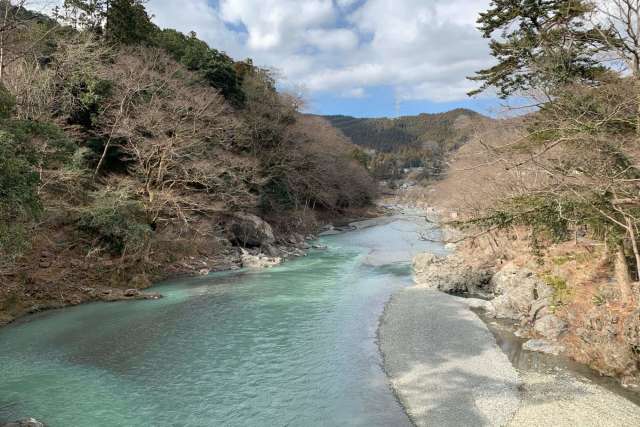
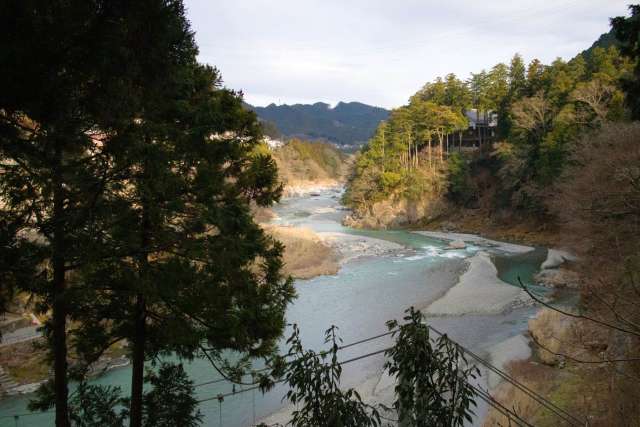
Take a walk along the Tama River and enjoy the contrast to the city.
Sawanoi (Ozawa Shuzo) is one of ten sakagura in Tokyo prefecture (or area). Its location in Sawai, in the Okutama region of Tokyo, is a calming contrast to the bustle of metropolitan Tokyo. You'll likely see many hikers heading out to the popular spot during the 2-hour train ride from metropolitan Tokyo.
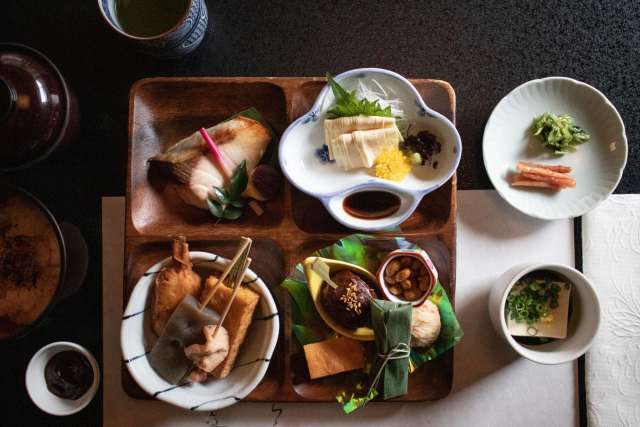
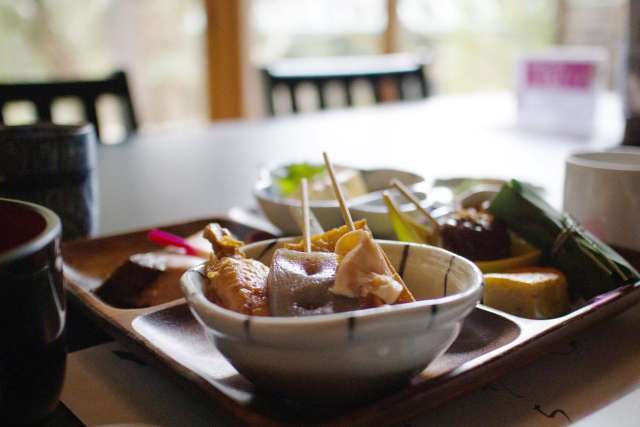
An elegant course meal at Mamagotoya at Sawanoien, the garden area connected to the brewery.
Their riverside location makes a perfect getaway from the city’s hustle and heat. A variety of food options are available, from sake manju (steamed sake-bread) that you can eat outside, to an elegant Japanese restaurant offering beautiful course dinners. On their sakagura tour, you’ll learn about cultural symbols of sake, how Shinto still plays a role in modern brewing and see the sake making process. You can try an ochoko or two at the end of their tour. If you want to try more sake, their public tasting room has a great variety at an affordable price. Sawanoi also offers tours in English.
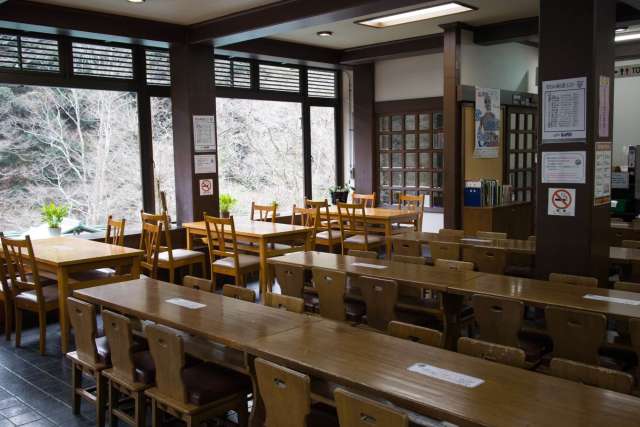
You can visit the public tasting room without taking a tour. Stop in after strolling along the river!
Storing your sake
Sake makes a great souvenir or gift from your trip. Once you open your bottle, keep it in the fridge or in a cool dark place up to 2-3 weeks. It won’t spoil if you keep it longer or if you store it on the shelf, but the flavor of your sake changes as it oxidizes. If unopened, sake should keep for 6 months without the flavor changing. As sake ages it becomes darker and yellows. It’s still safe to drink and you might even like your mature sake better.
If you make sake part of your trip, you’re sure to make memories to take home with you. Find your favorite sake to bring back to celebrate with friends at home.
Canadian
Over 20 years living in various parts of Japan.
I'm a Canadian writer and photographer based in Tokyo. I love helping people enjoy their time in Japan.




















































